#NASA rover lands on Mars to look for signs of ancient life
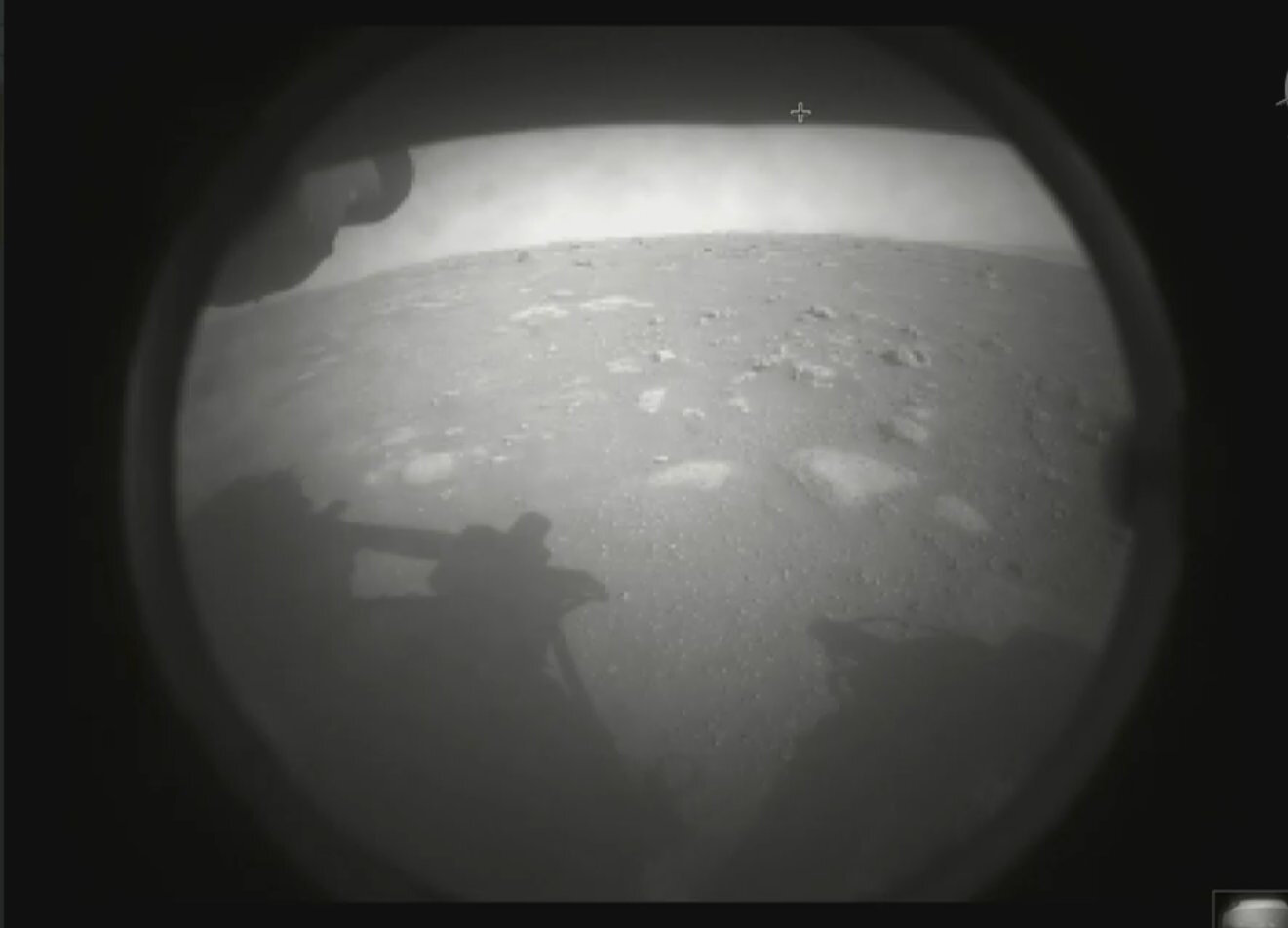
“#NASA rover lands on Mars to look for signs of ancient life”

A NASA rover streaked through the orange Martian sky and landed on the planet Thursday, accomplishing the riskiest step yet in an epic quest to bring back rocks that could answer whether life ever existed on Mars.
Ground controllers at the space agency’s Jet Propulsion Laboratory in Pasadena, California, jumped to their feet, thrust their arms in the air and cheered in both triumph and relief on receiving confirmation that the six-wheeled Perseverance had touched down on the red planet, long a deathtrap for incoming spacecraft.
It took a tension-filled 11 1/2 minutes for the signal to reach Earth.
“Touchdown confirmed! Perseverance safely on the surface of Mars, ready to begin seeking signs of past life,” flight controller Swati Mohan announced to back-slapping, fist-bumping colleagues wearing masks against the coronavirus.
The landing marks the third visit to Mars in just over a week. Two spacecraft from the United Arab Emirates and China swung into orbit around Mars on successive days last week. All three missions lifted off in July to take advantage of the close alignment of Earth and Mars, journeying some 300 million miles in nearly seven months.
Perseverance, the biggest, most advanced rover ever sent by NASA, became the ninth spacecraft to successfully land on Mars, every one of them from the U.S., beginning in the 1970s.
The car-size, plutonium-powered vehicle arrived at Jezero Crater, hitting NASA’s smallest and trickiest target yet: a 5—by-4-mile strip on an ancient river delta full of pits, cliffs and fields of rock. Scientists believe that if life ever flourished on Mars, it would have happened 3 billion to 4 billion years ago, when water still flowed on the planet.

Over the next two years, Percy, as it is nicknamed, will use its 7-foot (2-meter) arm to drill down and collect rock samples with possible signs of bygone microscopic life. Three to four dozen chalk-size samples will be sealed in tubes and set aside on Mars to be retrieved by a fetch rover and brought homeward by another rocket ship. The goal is to get them back to Earth as early as 2031.
Scientists hope to answer one of the central questions of theology, philosophy and space exploration.
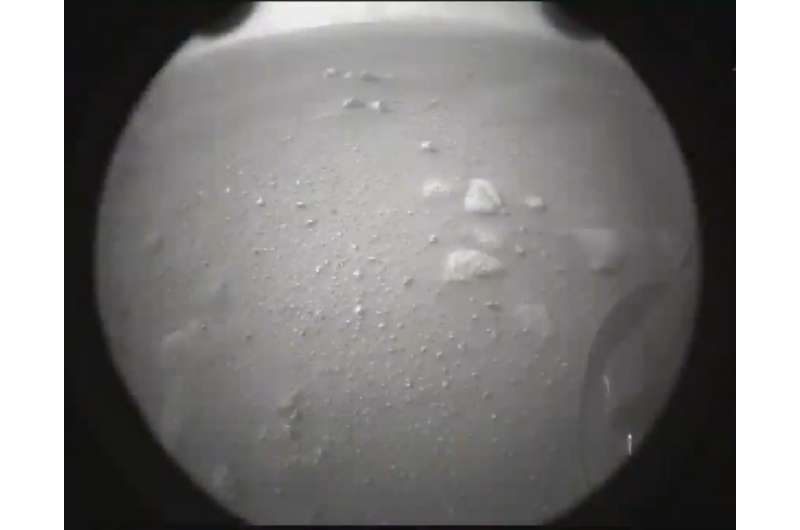
“Are we alone in this sort of vast cosmic desert, just flying through space, or is life much more common? Does it just emerge whenever and wherever the conditions are ripe?” said deputy project scientist Ken Williford. “We’re really on the verge of being able to potentially answer these enormous questions.”
China’s spacecraft includes a smaller rover that also will be seeking evidence of life—if it makes it safely down from orbit in May or June.
Perseverance was on its own during the NASA-described “seven minutes of terror” descent.
Flight controllers waited helplessly as the preprogrammed spacecraft hit the thin, 95% carbon dioxide Martian atmosphere at 12,100 mph (19,500 kph), or 16 times the speed of sound, slowing as it plummeted.
It released its 70-foot (21-meter) parachute, jettisoned its heat shield, and then used a rocket-steered platform known as a sky crane to lower the rover the final 60 or so feet (18 meters) to the surface.
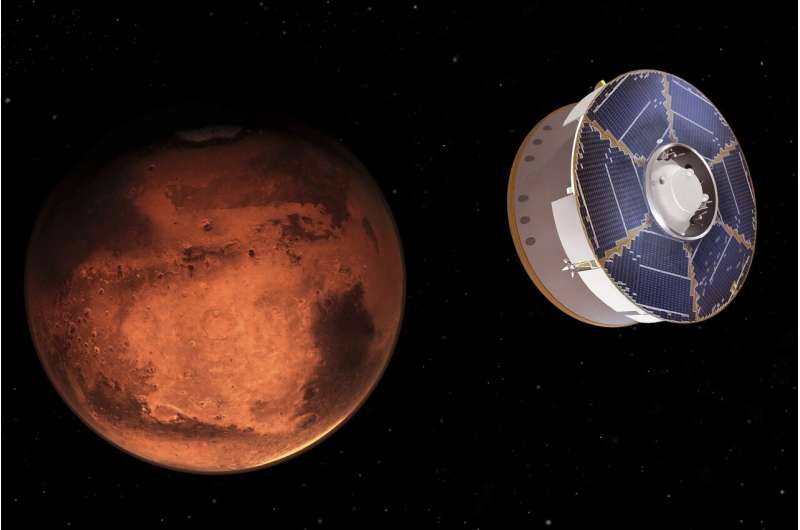
Perseverance promptly sent back a grainy, black-and-white photo of Mars’ pockmarked surface, the rover’s shadow visible in the frame. The rover appeared to have touched down about 35 yards from the nearest rocks.
“Take that, Jezero!” a controller called out.
Mars has proved a treacherous place: In the span of less than three months in 1999, a U.S. spacecraft was destroyed upon entering orbit because engineers had mixed up metric and English units, and an American lander crashed on Mars after its engines cut out prematurely.
-
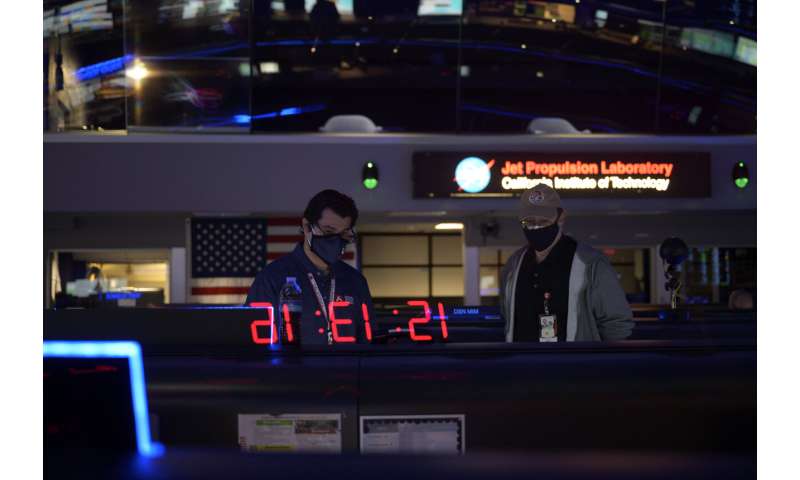
In this photo provided by NASA, members of the Perseverance Mars rover team study data on monitors in mission control, Thursday, Feb. 18, 2021, at NASA’s Jet Propulsion Laboratory in Pasadena, Calif. The landing of the six-wheeled vehicle would mark the third visit to Mars in just over a week. Two spacecraft from the United Arab Emirates and China swung into orbit around the planet on successive days last week. (Bill Ingalls/NASA via AP)
-

In this illustration made available by NASA, the spacecraft containing the Perseverance rover slows down using the drag generated by traveling through the Martian atmosphere. (NASA/JPL-Caltech via AP)
-

In this photo provided by NASA, members of NASA’s Perseverance rover team react in mission control after receiving confirmation the spacecraft successfully touched down on Mars, Thursday, Feb. 18, 2021, at NASA’s Jet Propulsion Laboratory in Pasadena, Calif. The landing of the six-wheeled vehicle marks the third visit to Mars in just over a week. Two spacecraft from the United Arab Emirates and China swung into orbit around the planet on successive days last week. (Bill Ingalls/NASA via AP)
-

Jennifer Trosper, deputy project manager at NASA’s Jet Propulsion Laboratory comments on the Mars 2020 Perseverance’s descent, which has been described by NASA as “seven minutes of terror,” in which flight controllers can only watch helplessly, at NASA’s Jet Propulsion Laboratory (JPL) Thursday, Feb. 18, 2021, in Pasadena, Calif. (AP Photo/Damian Dovarganes)
Perseverance will conduct an experiment in which it will convert small amounts of carbon dioxide in the atmosphere into oxygen, a process that could be a boon to future astronauts by providing breathable air and an ingredient for rocket fuel.
The rover is also equipped with a record 25 cameras and two microphones, many of them turned on during descent. Among the never-before-seen views NASA intends to send back in the next couple days: the enormous supersonic parachute billowing open and the ground getting closer.
“A feast for the eyes and ears. It’s really going to be spectacular,” observed Arizona State University’s Jim Bell, lead scientist for a pair of mast cameras that will serve as the rover’s eyes.
-
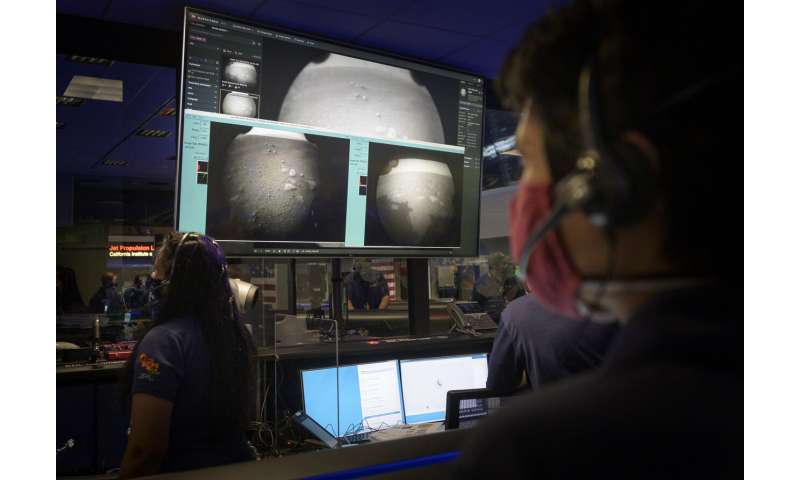
In this photo provided by NASA, members of NASA’s Perseverance Mars rover team watch in mission control as the first images arrive moments after the spacecraft successfully touched down on Mars, Thursday, Feb. 18, 2021, at NASA’s Jet Propulsion Laboratory in Pasadena, Calif. (Bill Ingalls/NASA via AP)
-

Bekah Siegfriedt, Mars 2020 mission operator comments on the Mars 2020 Perseverance’s descent to the surface of the planet which has been described by NASA as “seven minutes of terror,” in which flight controllers can only watch helplessly, at NASA’s Jet Propulsion Laboratory (JPL) Thursday, Feb. 18, 2021, in Pasadena, Calif. (AP Photo/Damian Dovarganes)
-
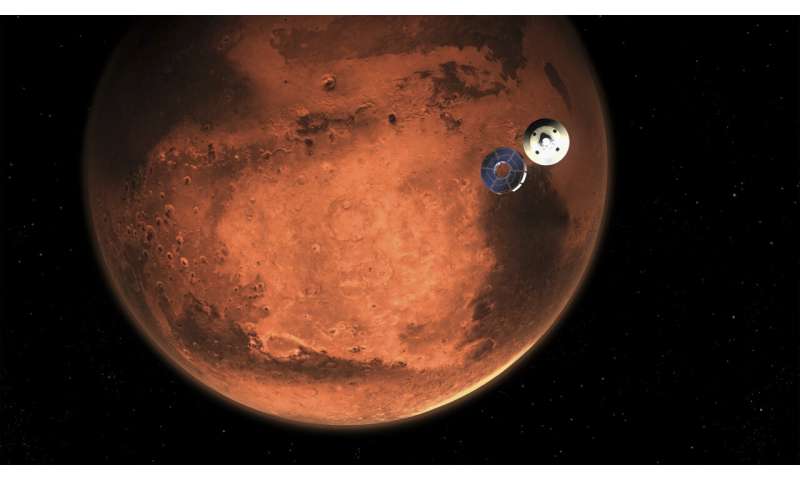
In this illustration made available by NASA, the Perseverance rover casts off its spacecraft’s cruise stage, minutes before entering the Martian atmosphere. (NASA/JPL-Caltech via AP)
-
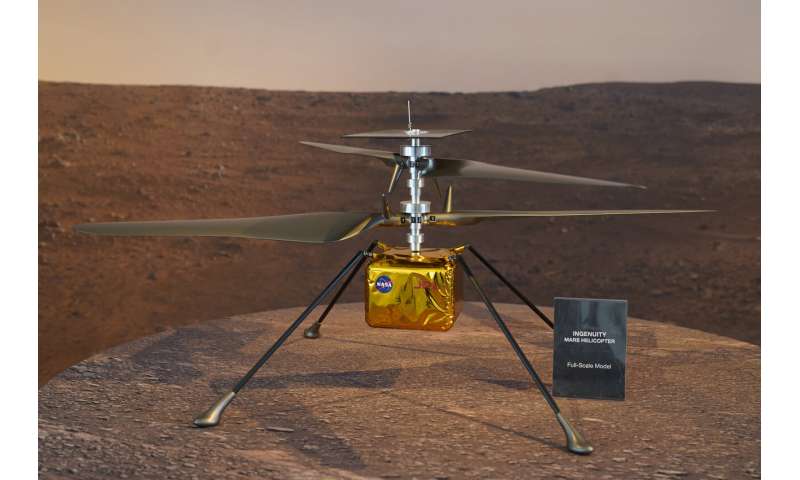
A full-scale model of the Mars Helicopter Ingenuity is displayed for the media at NASA’s Jet Propulsion Laboratory (JPL) Wednesday, Feb. 17, 2021, in Pasadena, Calif. (AP Photo/Damian Dovarganes)
-
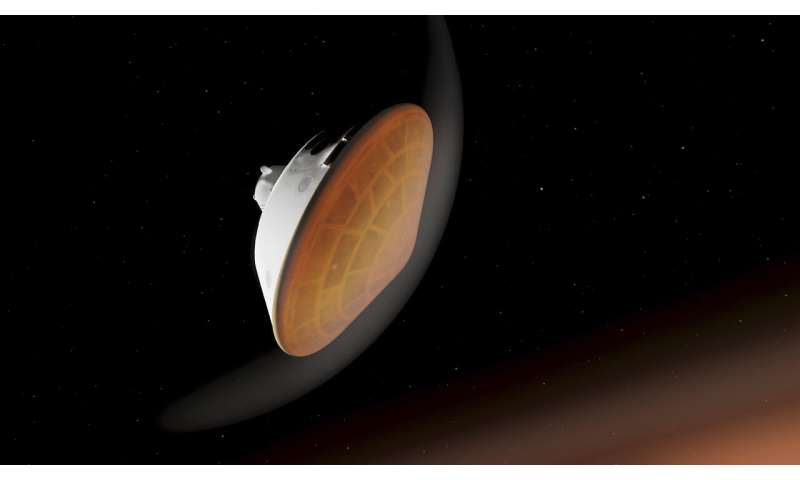
In this illustration made available by NASA, the Perseverance rover, with its heat shield facing the planet, begins its descent through the Martian atmosphere. (NASA/JPL-Caltech via AP)
-
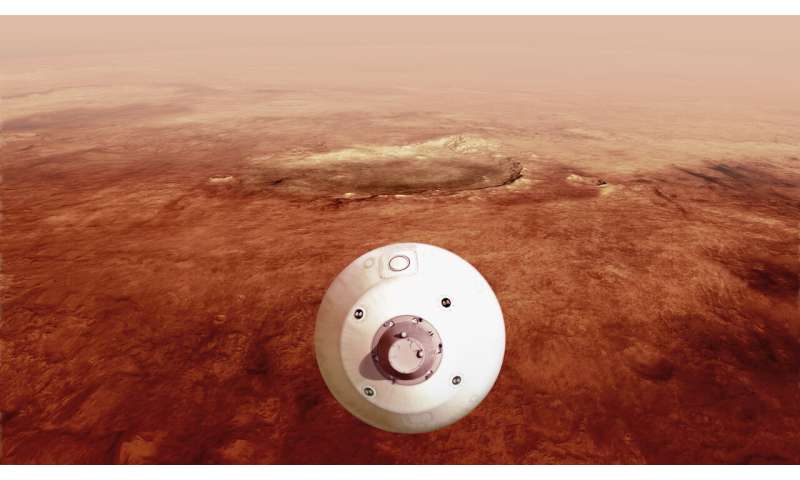
In this illustration made available by NASA, The aeroshell containing the Perseverance rover guides itself towards the Martian surface as it descends through the atmosphere. (NASA/JPL-Caltech via AP)
NASA is teaming up with the European Space Agency to bring the rocks home. Perseverance’s mission alone costs nearly $3 billion.
The only way to confirm—or rule out—signs of past life is to analyze the samples in the world’s best labs. Instruments small enough to be sent to Mars wouldn’t have the necessary precision.
“It’s really the most extraordinary, mind-boggingly complicated and will-be history-making exploration campaign,” David Parker, the European Space Agency’s director of human and robotic exploration, said on the eve of landing.
-
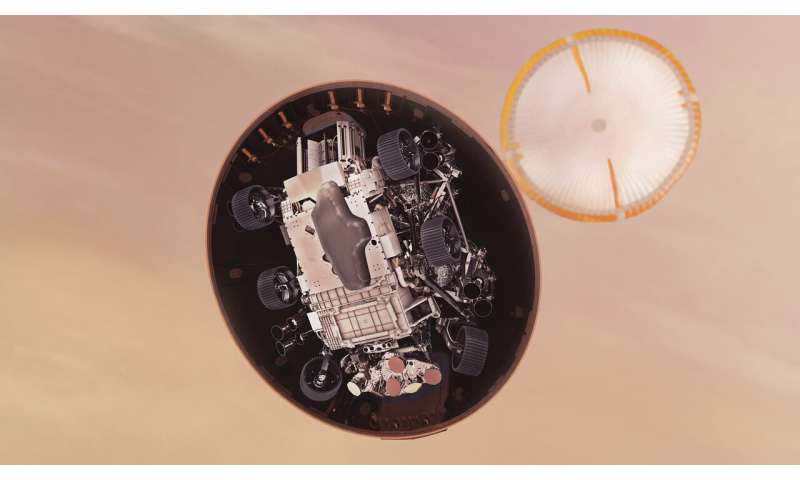
In this illustration made available by NASA, the Perseverance rover gets its first look at the Martian surface below, after ejecting its heat shield just under six minutes after entry into the Mars atmosphere. (NASA/JPL-Caltech via AP)
-

This image made available by NASA depicts a possible area through which the Mars 2020 Perseverance rover could traverse across Jezero Crater. This mosaic is composed of aligned images from the Context Camera on the Mars Reconnaissance Orbiter. (NASA/JPL-Caltech/USGS via AP)
-

In this illustration provided by NASA, the Perseverance rover fires up its descent stage engines as it nears the Martian surface.. This phase of its entry, descent and landing sequence, or EDL, is known as “powered descent.” (NASA/JPL-Caltech via AP)
NASA rover streaks toward a landing on Mars
© 2021 The Associated Press. All rights reserved. This material may not be published, broadcast, rewritten or redistributed without permission.
Citation:
NASA rover lands on Mars to look for signs of ancient life (2021, February 18)
retrieved 18 February 2021
from https://phys.org/news/2021-02-nasa-rover-mars-ancient-life.html
This document is subject to copyright. Apart from any fair dealing for the purpose of private study or research, no
part may be reproduced without the written permission. The content is provided for information purposes only.
If you liked the article, do not forget to share it with your friends. Follow us on Google News too, click on the star and choose us from your favorites.
For forums sites go to Forum.BuradaBiliyorum.Com
If you want to read more Like this articles, you can visit our Science category.



